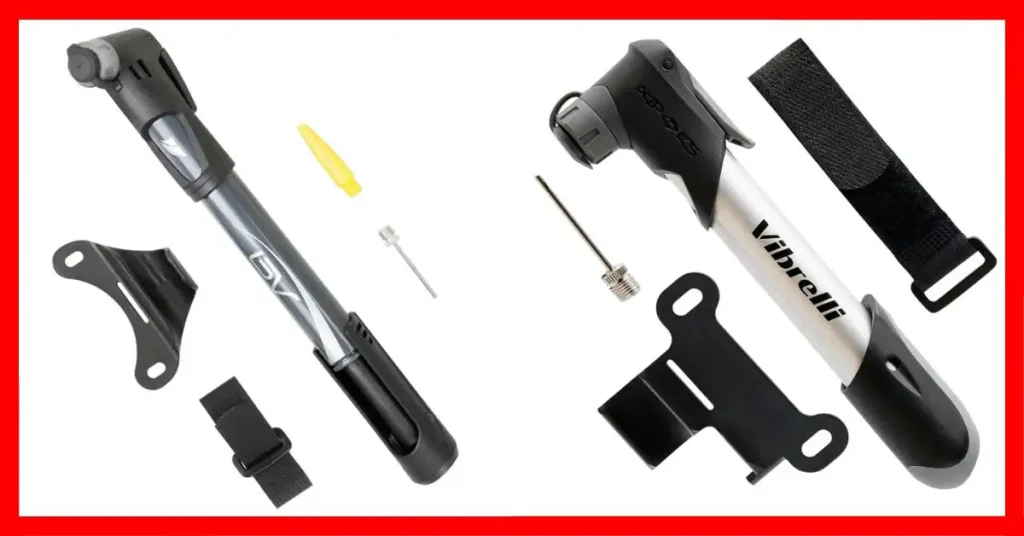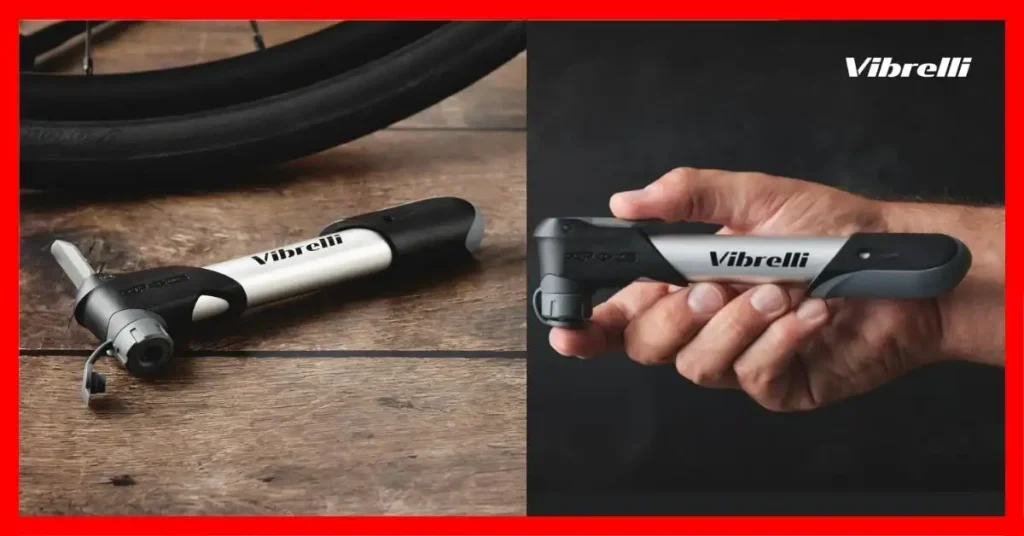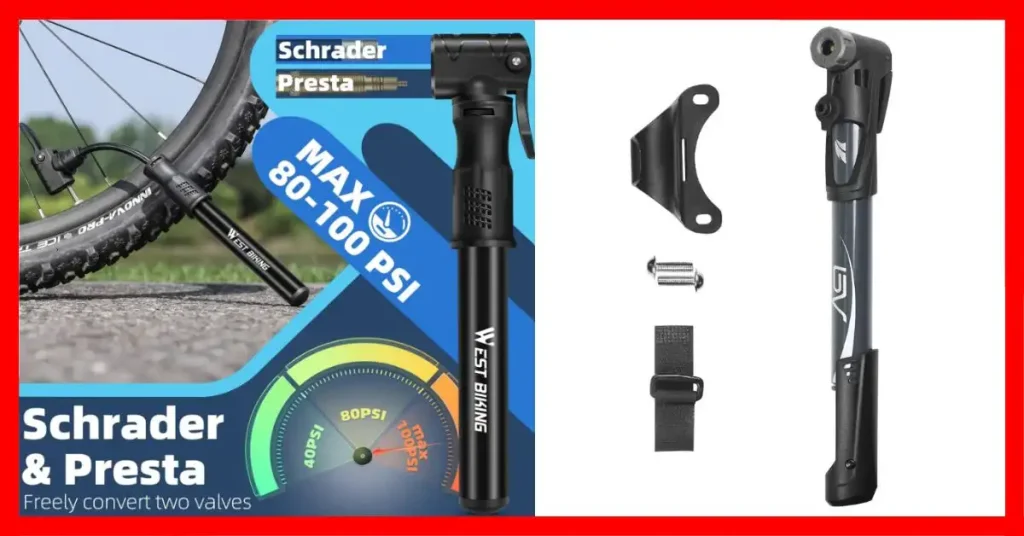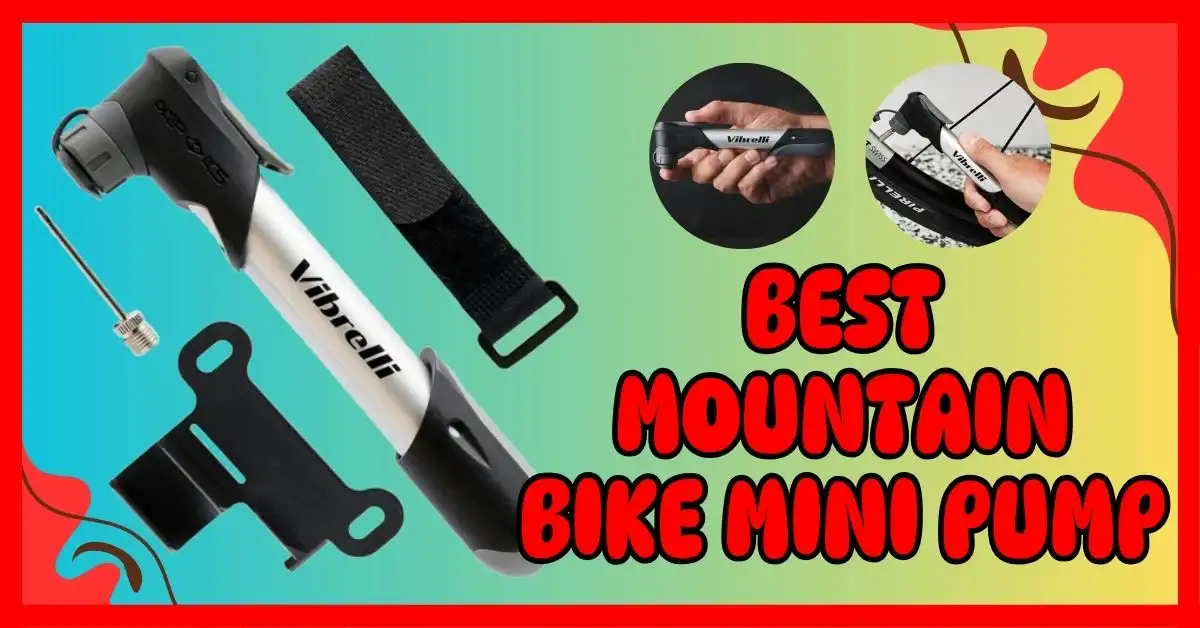I once got a flat tire halfway up a rocky trail. No signal, no help — just me, my bike, and a slow leak. That’s when I learned how much a small bike pump can save the day. Since then, I’ve tested many pumps, from heavy floor models to light MTB mini pumps that fit right on the frame. In this guide, I’ll show you what makes the Best Mountain Bike Mini Pump worth it and how to choose one that keeps your rides smooth and stress-free.

Why You Need a Reliable Mini Pump for Mountain Biking
I learned the hard way how useful a mini pump is. One day, I got a flat tire mid-trail. No pump. I had to walk my bike back. It was frustrating. That day, I knew a mountain bike pump is more than a tool. It is safety.
A mini pump fits in your backpack or on your bike frame. It is small but strong. Frame pumps sit on your bike and are easy to reach. Bike floor pumps are big and stay home. CO₂ inflators pump fast but you can only use them once. Electric bike pumps are handy, but heavy on the trail.
With a good bike pump, you can fix a flat quickly. You can keep riding without stress. Even a small flat won’t ruin your day if you carry the best bike pump on your bike.
What to Look for in the Best MTB Mini Pump
Finding the right mini pump can save your ride and your day. A good pump is small, reliable, and fast. But not all mini pumps are equal. Here’s what I focus on when picking one.
1. Valve Compatibility
Most mountain bikes use Presta valves. Some use Schrader. Some pumps handle both. A dual or smart valve system is a real lifesaver. It means you won’t need extra adapters. You can pump any tire on the trail quickly.
2. PSI Range and Pumping Efficiency
MTB tires usually need 30–60 PSI. A pump that can reach 120 PSI gives extra flexibility. Even if you rarely hit 120, it’s handy for road rides or fat-tire bikes. Efficient pumping matters too—fewer strokes mean less effort.
3. Build Quality and Weight
Aluminum pumps are light and strong. Plastic pumps are lighter but can feel flimsy. Compact pumps are easy to carry. Frame-mounted pumps sit on your bike, ready for action without adding bulk. I always check weight vs durability.
4. Mounting and Portability
A pump is only useful if you can carry it securely. Bracket mounts keep it snug on your frame. No rattles, no lost pumps mid-ride. Some mini pumps fit in your backpack if you prefer. Trail convenience is key.
5. Pressure Gauge or Not?
Some pumps have a tiny gauge. It can help you hit exact PSI. On mini pumps, gauges add weight and sometimes inaccuracy. I find them handy but not essential for most MTB rides.
6. Bonus Features
Modern pumps have cool extras. Some electric bike pumps save energy on long rides. Others include ball needles, hose storage, or quick-connect systems. These features aren’t necessary but can make life easier on the trail.
My Top Picks — Best Mountain Bike Mini Pumps (USA Tested)
I tested many mini pumps on trails. Some were too big. Others were too weak. A few stood out. These pumps are small, light, and reliable.
1. Vibrelli Mini Bike Pump — Best Overall for Mountain Bikes
This is my top pick. No valve changes needed. It reaches 120 PSI and is made of lightweight aluminum. I mounted it on my bike frame. It stayed secure with no rattles. Pumping was smooth and easy.
2. BV Mini Bike Pump — Best for Multi-Purpose Riders
This pump works on bikes, balls, and other inflatables. It is small but powerful. I like it for day rides or casual trips. It is affordable and does the job well.
3. West Biking Mini Pump — Best Budget-Friendly Option
This pump is light and simple. Great for casual MTB rides or kids’ bikes. The flexible hose makes pumping easier. PSI range is enough for most trails.
4. Honorable Mentions
Other good pumps include Topeak, Lezyne, and CYCPLUS. Electric options like battery bike pumps are handy. They save effort but weigh more.
👉🏿👉🏻 Check Latest Price and Offer at Amazon 👈🏻👈🏿
👉🏿👉🏻 Check Latest Price and Offer at Amazon 👈🏻👈🏿
👉🏿👉🏻 Check Latest Price and Offer at Amazon 👈🏻👈🏿

Comparing Mini Pumps vs CO₂ Inflators vs Electric Pumps
When I ride, I always think about which pump to carry. Each type has pros and cons. Choosing the right one can save time and effort on the trail.
Mini Pump
Mini pumps are always ready. No refills needed. They are reliable and fit on your frame. You can pump tires anywhere, even in mud or rain. I keep one on my bike at all times.
CO₂ Inflator
CO₂ inflators are very fast. One twist, and your tire is pumped. But each cartridge is single-use. You must carry extras if you ride far. I like them for short rides or emergencies.
Electric Pump
Electric pumps are convenient. They pump tires quickly with little effort. But they are heavier and need a battery. I usually carry one only on long rides or when I pack a bigger bag.
My Personal Verdict
For most trail rides, I stick with a mini pump. It is light, durable, and reliable. CO₂ inflators are my backup for quick fixes. Electric pumps are nice, but I don’t take them on every ride.
How to Mount and Use a Mini Bike Pump on a Mountain Bike
Mounting a mini pump is easy. Most pumps come with a small bracket. I like to attach it under my bike’s top tube or seat tube. It stays secure and doesn’t rattle on rocky trails.
Start by checking your valve type. Most MTB tires use Presta or Schrader valves. Match the pump head to your valve. Some pumps have a dual or smart head that works for both.
To use the pump, attach it firmly to the valve. Pump steadily. You don’t need fast, hard pushes. A smooth rhythm fills the tire efficiently. Always check the PSI with a gauge or your own feel.
Pro tip: Carry a small hose or extension if your pump has one. It makes pumping easier on tight tires or deep mud. I always practice mounting and pumping at home before hitting the trail.

Real-World Test — What I Learned After Weeks on the Trails
I took my mini pumps on multiple rides through mud, rocks, and rain. The Vibrelli handled everything without fuss. It stayed mounted and pumped tires quickly. The West Biking pump was light and easy to carry, but it took more strokes on bigger tires.
The BV Mini Pump impressed me with its multi-use design. I could inflate balls and other gear. That saved time and space in my pack. CO₂ inflators worked fast, but I had to carry refills. Electric pumps were handy but felt bulky on long rides.
Mud and water revealed build quality differences. Aluminum pumps held up best. Plastic ones were okay, but I noticed some flex under pressure. Hose extensions and smart valves made pumping easier, especially in tight spots or muddy conditions.
Overall, a pump that is reliable, light, and easy to mount matters most. On long rides, I prefer carrying a mini pump over a CO₂ inflator. Electric pumps are nice for short rides or home prep, but I stick to manual for the trail.
Final Verdict — My Honest Pick for the Best MTB Mini Pump
After testing several mini pumps on trails, the Vibrelli Mini Bike Pump stands out. It’s light, strong, and easy to mount on any bike frame. I could pump tires fast, even in mud or rain.
The BV Mini Pump is handy for multi-use, from bikes to sports balls. West Biking is great if you want a small, budget-friendly option. Each pump has its perks, but reliability and ease matter most on trails.
In short, if you want a pump you can trust every ride, the Vibrelli Mini Bike Pump is my top pick. It handles mountain bike tires well and feels solid under pressure. For me, this pump earns every mile on the trail.

FAQs — Answering Common Questions About Bike Pumps
What is the best mini pump for mountain bikes?
After testing many, the Vibrelli Mini Bike Pump tops my list. It’s light, strong, and fits easily on any bike frame. I could pump tires fast, even in mud or rain. If you want reliability on every ride, this pump is a solid pick.
Can I use a mini pump for road bikes too?
Yes! Most mini pumps work on road bikes. Just check the valve type — Presta or Schrader. I’ve used the Vibrelli on my road bike, and it held up well. Compact size makes it easy to carry on long rides.
What PSI should I pump my mountain bike tires to?
For MTB tires, aim for 30–60 PSI, depending on terrain and tire width. I usually stick near 40 PSI for trails — firm enough for control but soft enough for grip. Mini pumps can reach higher PSI if needed.
Is an electric bike pump worth it for trail rides?
It can be handy if you hate pumping by hand. But electric pumps are heavier. I bring one only on long rides or when I need fast inflation. For short trips, a mini pump is easier and always ready.
What’s better — a mini pump or CO₂ inflator?
Mini pumps are reliable and reusable. CO₂ inflators are fast but single-use. On muddy trails, I trust a mini pump more. CO₂ is great for emergencies when you need a super quick fix. I usually carry both for peace of mind.
Key Takeaways (For Quick Readers)
- Top pump choice: The Vibrelli Mini Bike Pump is light, strong, and easy to use. It works well on all trails.
- Must-have features: Pick a pump that fits Presta and Schrader valves. Look for a good PSI range and a frame mount. These features make pumping fast and simple.
- Best options by type: Manual pumps are reliable. CO₂ inflators are fast for emergencies. Electric pumps save effort but weigh more.
- Trail-ready tip: Always carry a pump that suits your ride. Small, light pumps help on muddy or rocky trails.
- Focus keyword reminder: A best mountain bike mini pump keeps your ride safe and stress-free.
Related Guides You Might Like
If you liked this guide, check out a few others that can help you on the trail.
- Best Electric Bike Pumps – Want to pump fast without sweating? Electric pumps save effort and work well for longer rides.
- Best CO₂ Inflators for Mountain Bikes – Quick fixes for flats. These are tiny, light, and perfect for emergencies.
How to Fix a Flat Tire Mid-Trail (Quick Guide) – Step-by-step tips for getting back on your bike fast. No panic, just simple fixes.
To Get More About Sports & Outdoors Product You Can Visit Our Site. If You Found our Posts Helpful Leave a Comment Below

